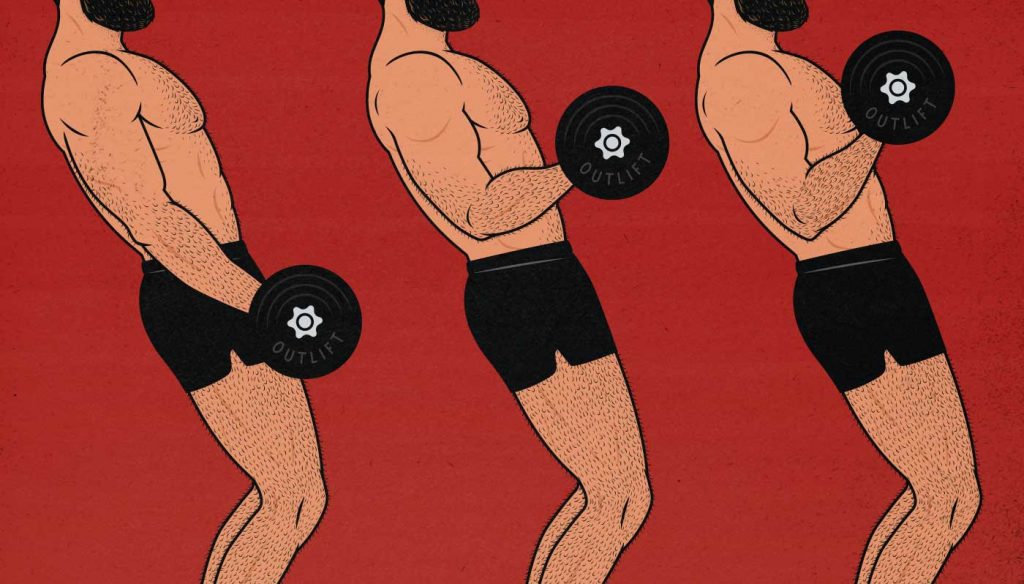
The Sissy Curl: A Barbell Alternative to the Preacher Curl
Our biceps are the limiting factor in even the humblest barbell and biceps curl variations, and so every variation of curl will reliably provoke at least a little bit of biceps growth. The only problem with most curl variations is that they’re relatively easy at the bottom of the range of motion, when our biceps are stretched. This is a problem because that’s by far the most important part of the range of motion for stimulating muscle growth. To make matters worse, the chin-up has the same problem, and underhand rows are even worse.
That’s where the preacher curl comes in. It allows us to fully extend our arms at the bottom of the lift, and it challenges our biceps quite a lot in that stretched position. This makes it a great curl variation for building bigger biceps. Perhaps the best variation of all. As a result, most bodybuilding gyms have a preacher curl station, and many biceps aficionados even buy one for their home gyms.
Fortunately, you don’t need a preacher curl station. In this article, we’ll show you how you can get the benefits of the preacher curl with just a barbell and some body English.
Introduction
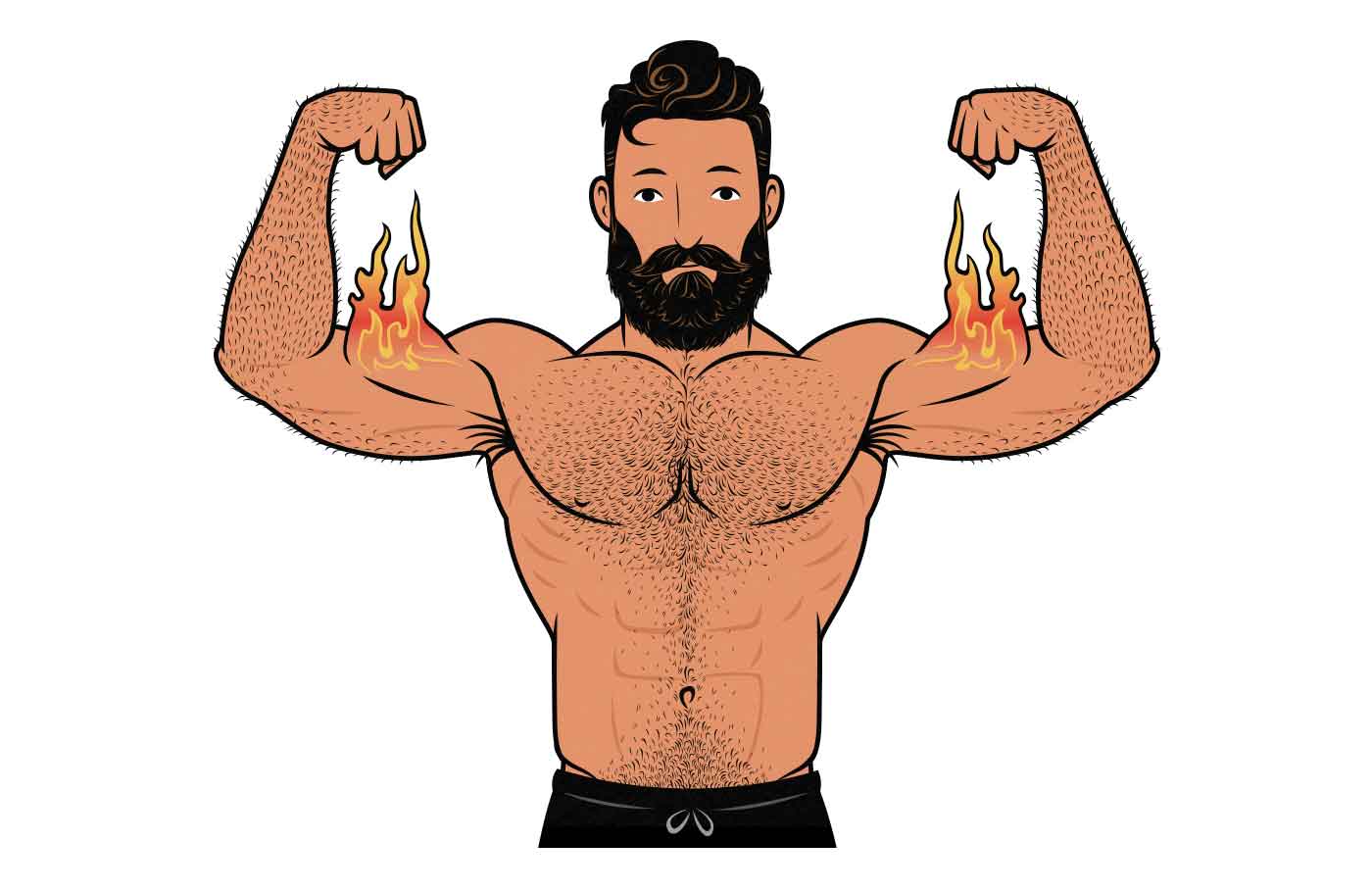
When doing research for our article on strength curves, it became evident that the barbell curl is quite good at stimulating muscle growth in our biceps. No big surprise there, of course. However, it also became clear that the preacher curl is likely even better. The reason being that the preacher curl does a better job of challenging our muscles in a stretched position.

If we look at this meta-analysis comparing isometric lifts done at different muscle lengths, we see that lifts that challenge our muscles in a stretched position stimulate nearly three times as much muscle growth. These research findings aren’t all that surprising, either. Mechanical tension is the main factor that stimulates muscle growth, and when our muscles are stretched, both passive and active tension are added together, raising the overall tension higher. Therefore, if we challenge our muscles in a stretched position, we get more mechanical tension and thus stimulate more muscle growth.
This research rings true if we look at the traditional hypertrophy lifts, too. It helps to explain why the bench press is so good for bulking up our chests, the front squat is so good for bulking up our quads, and the deadlift is so good for bulking up our hips and hamstrings. In all three of these lifts, our prime movers are worked extremely hard while stretched.
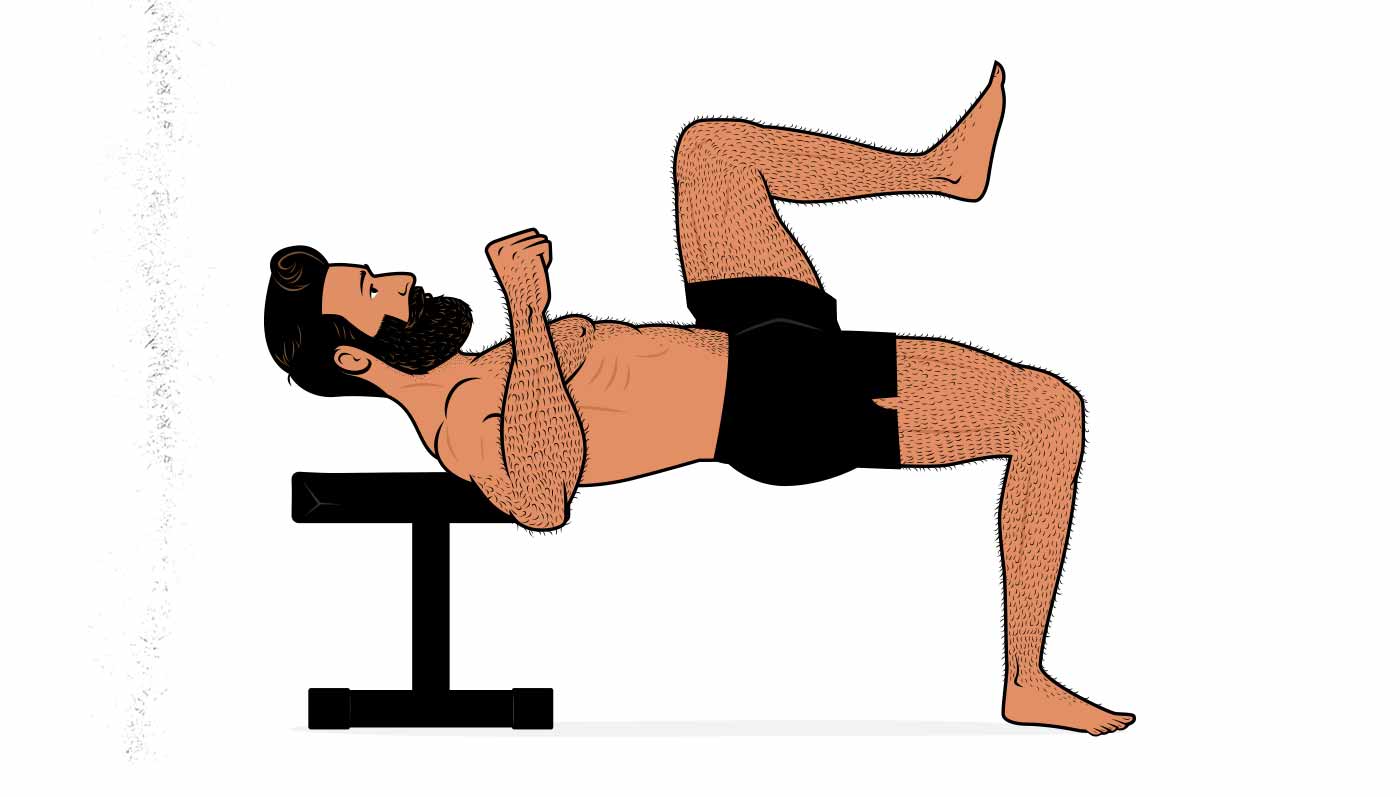
For another example, we can compare hip thrusts against squats. Hip thrusts challenge our glutes in a contracted position, whereas squats challenge them in a stretched position. A recent study found that squats produce around twice as much muscle growth as hip thrusts. It’s possible that this difference in muscle growth is due (or partially due) to the difference in the strength curves of the lifts.
Unfortunately, the three main lifts that we use to train our biceps—the biceps curl, the chin-up, and the row—aren’t very good at challenging our biceps in a stretched position. That’s where the preacher curl comes in.
The Benefits of the Preacher Curl
In the 1960s, the bodybuilders Vince Gironda and Larry Scott invented something called the “Scott Bench” to help them build bigger biceps. And it worked. Larry Scott won the Olympia, becoming the top bodybuilder in the world, famous for both his biceps and forearm development—both of which he trained on this special bench.
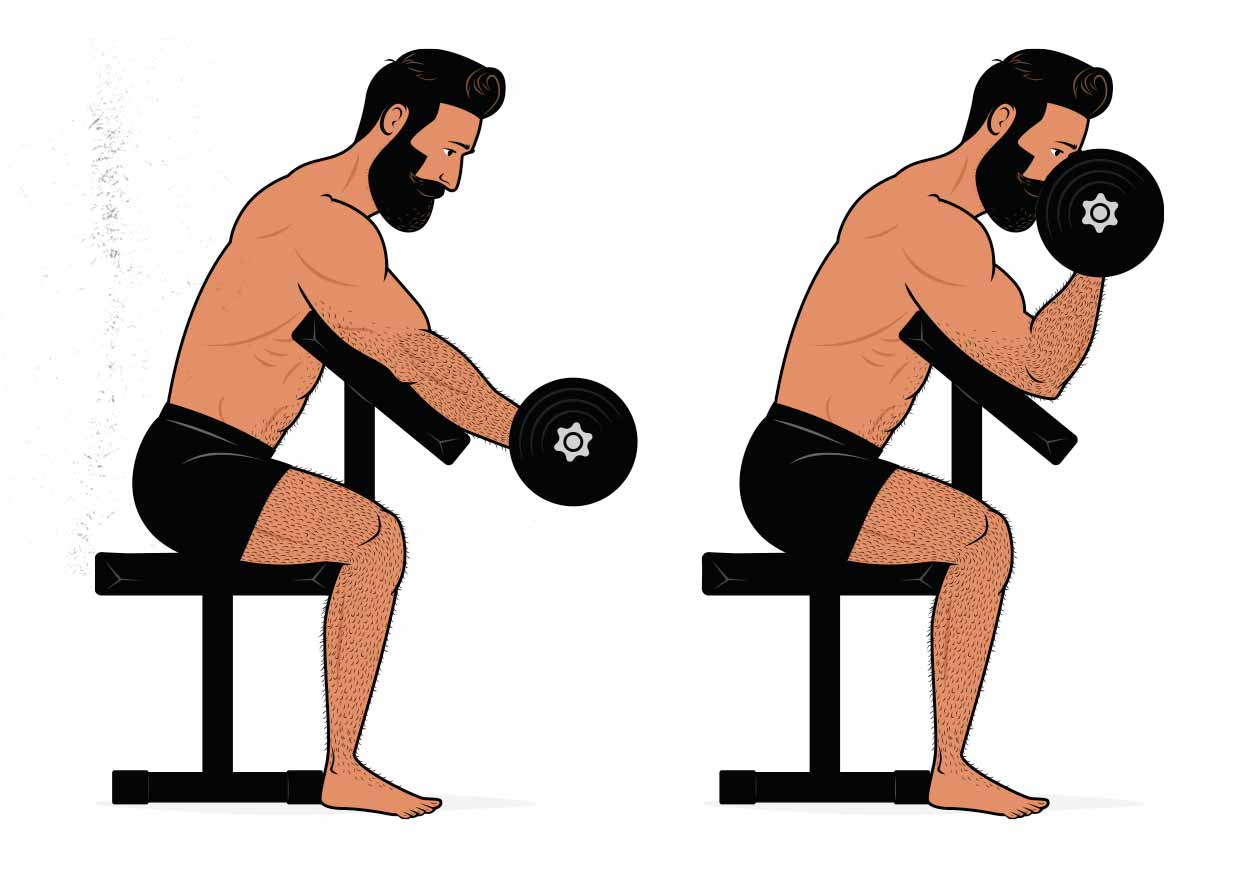
Due to Larry Scott’s success as a bodybuilder, the “Scott Curl” gained popularity among other top bodybuilders, including Arnold Schwarzenegger. It then trickled down to bodybuilding gyms, and has been a staple of bodybuilding for over fifty years now, most commonly referred to as the preacher curl.
With modern research showing that challenging our muscles at longer muscle lengths produces markedly more muscle growth, we now have a way to explain what bodybuilders have known all along: preacher curls are amazing for building bigger biceps.
That filled me with a feeling of great dismay, for I train at home, and my home doesn’t have a preacher curl bench. I’m also not particularly inclined to buy one, given that it takes up quite a bit of space and is only useful for two lifts: preacher curls and reverse preacher curls.
Introducing the Sissy Curl
So I got to thinking. All we need to do is increase the moment arm on our elbow joints at the bottom of the range of motion. What if we lean back while scooching our knees forward, similar to when doing sissy squats?
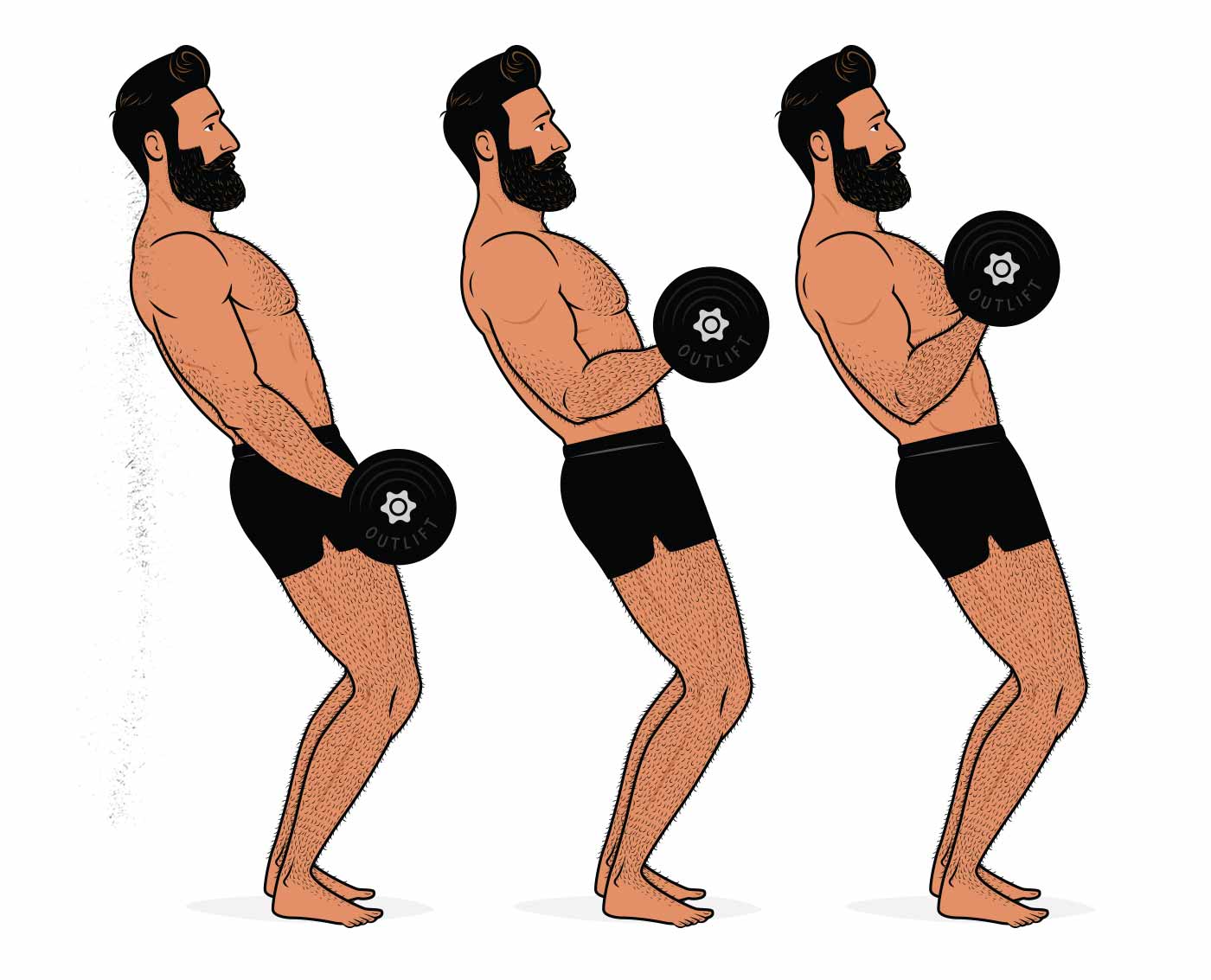
To my great and continued surprise, it worked. Not only did the barbell curl became much harder at the bottom of the range of motion, but the lift actually felt quite sturdy and easy to perform.
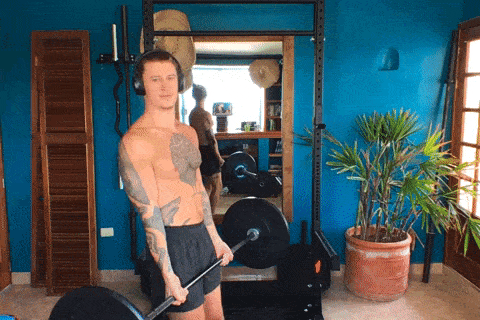
If we lean back while doing barbell curls, a few interesting things happen.
- The external moment arm at our elbow joint increases in the starting position, working our biceps harder in a stretched position. And that’s good. That’s the same benefit as we get with a preacher curl. This makes the strength curve better for building muscle.
- The external moment arm also increases at the shoulder joint, and since our biceps connect at the shoulder joint, this makes the curl much harder on our biceps in the starting position and keeps constant tension on our biceps throughout the entire range of motion. It also brings our front delts into the lift, making it both a shoulder and biceps lift.
- We need to keep our torsos sturdy throughout the lift, and so this is a lift that requires quite a bit of core stability. The core muscles are by no means a limiting factor, but nonetheless, it might not be a great choice for rank beginners.
- Our biceps are trained at longer muscle lengths than with the preacher curl. Our biceps attach to our shoulders, so when we raise our shoulders up to put our arms on the preacher curl bench, it shortens our biceps. But with sissy curls, our upper arms are kept in line with our torsos at the start of the lift, challenging them in a more stretched position. This is a potential advantage.
Just a little bit of backward lean did the trick. When doing the above illustration, I traced my ankle and knee angles to make sure it was accurate. I’m sure it will be a bit different for everyone, but that’s a good place to start.
You’ll notice that when doing these curls, it’s possible to rest the barbell on your thighs at the bottom, similar to how you’d rest at the bottom of a preacher curl. I tried my best not to. I tried to keep tension on my biceps throughout the entire set.
What was surprising, though, is that the lift felt really good, my biceps got worked quite hard, and I had an unusual amount of biceps soreness the next day. In fact, the soreness I felt reminded me of back when I would blast my biceps with preacher curls. I hadn’t had that feeling since I’d switched to using a barbell home gym.
I tried looking this lift up. I couldn’t find it. Until a name emerges, I figure we can call these leaning barbell curls “sissy curls.” After all, it’s a position similar to the sissy squat, which is another lift that Larry Scott is known for. And, being frank, doing barbell curls this way looks a bit odd. Mind you, the purpose of this lift is to give guys using barbell home gyms an alternative to the preacher curl. The only person who might laugh at you is you.
Update: In the comments, I’ve been told of the Gironda “Perfect” Curl, which is similar, starting in a leaned back position. It’s a little bit different, as it involves leaning forward at the top, but I think it should accomplish a very similar effect.
Evaluating the Sissy Curl
I asked Marco to try these curls out to see what he thought. After all, Marco is the experienced strength coach, he’s the one with the health sciences degree, and he’s the one who trains college, professional, and Olympic athletes. Marco approved. He thought the logic behind sissy curls made sense, and when he tried them out, he found they worked his biceps quite hard.
Mind you, given that I may have invented this lift, there’s certainly no evidence to suggest they’re better than barbell curls. The best we can do is test them and see. To do that, the hypertrophy expert Mike Israetel, PhD, has a few proxies for muscle stimulation that he uses to determine which lifts are best for building muscle:
- How good is the mind-muscle connection? How much tension do we feel in the muscle we’re trying to work? In this case, I felt more tension in my biceps than when doing regular barbell curls. It felt more comparable to doing preacher curls.
- How much of a metabolite burn do we get in higher rep ranges? When doing sets of 15–25, how does the burn compare to similar exercises? Dr Israetel notes that there’s more of a burn when our fast-twitch muscle fibres are taken close to their limit, which is a good sign that the exercise is challenging those muscles. If that isn’t happening, we may not be engaging those bigger fast-twitch muscle fibres. In this case, I did get quite a good burn from the Sissy Curls.
- How many sets does it take to build a nice pump? When we do a few sets in higher rep ranges, which muscles get the biggest muscle pump? Now, to be clear, the pump itself does stimulate some muscle growth, but what we’re mainly trying to get a proxy for the muscle growth being stimulated via mechanical tension. In this case, my biceps pump was comparable to regular barbell curls. Perhaps better.
- How many challenging sets does it take to produce delayed onset muscle soreness (DOMS)? Muscle damage doesn’t seem to cause muscle growth, so soreness is certainly not the goal. However, when our muscles get sore, it’s a fairly good proxy for having challenged our muscles enough to stimulate muscle growth. In this case, just a few sets of Sissy Curls produced quite a lot of biceps soreness in the following days.
There are also signs that a lift might be a poor choice:
- Are you having trouble balancing? Do you feel your stabilizer muscles working more than the prime movers? I expected this to be a problem, but I actually felt quite sturdy. I felt almost all of the strain on my biceps.
- Do you feel generally tired instead of tired in the specific muscles you’re training? In this case, it was really just my biceps and, to a lesser extent, my shoulders that felt burned out at the end of a set.
- Does the lift cause joint pain? This is a common issue with barbell curls. Some people feel pain in their elbows or forearm tendons. This is usually remedied by switching to a curl-bar. I imagine the same would be true here. (I use a barbell and it feels good.)
These proxies don’t guarantee that a lift is good for building muscle, and they don’t guarantee that a certain lift is better than another. But these are the best rules of thumb that we have available, and they likely work better than some fancier methods of evaluating lifts, such as EMG research. Best of all, this allows us to test lifts ourselves, figuring out which lifts are best for us on an individual level.
For me, the sissy curl meets all of these criteria at least as well as the preacher curl does. My biceps are the limiting factor, they’re worked hard, and doing just a few sets makes them feel sore the following day. There’s no pain, surprisingly few balance issues. They feel great.
But I’d love to hear what you think.
Key Takeaways (& A Call for Help)
Barbell curls are a great lift for building bigger biceps. However, they don’t do a good job of challenging our biceps in a stretched position, which is the most important part of the range of motion for stimulating muscle growth. As a result, preacher curls may very well be the better lift for bulking up our biceps.

If we don’t have access to a preacher curl bench, we can seemingly create a similar effect by simply leaning back while doing barbell curls. This should allow us to stimulate more muscle growth in our biceps.
To be clear, I’m not trying to say that these are the best curl variation. I’m not sure if they stimulate more muscle growth than a traditional barbell curl. But I think they might be better for stimulating biceps growth than the traditional curl. And I’m curious to test them out and learn more.
It would be a great help if you could try these out. Then, using the proxies described in the previous section, let me know what you think.




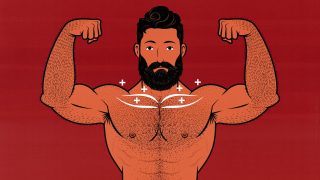
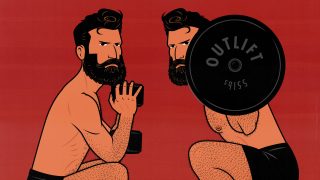
Great article Shane. Haven’t tried out the new curl variation but I will soon.
As far as alternatives to preacher curls two things come to my mind. First is using and incline bench and a dumbbell to perform preacher curls. The second is what I’ve always known as spider curls, where you lay face down on an incline bench with your arms hanging down in front of you and curl from this position. Both of these lifts get your arms out in front of your torso like in the preacher curl but without the use of a specialized piece of equipment. After all, dumbbells and an adjustable bench should be staples in any home gym. Just curious what your thoughts are on those?
Hey Matt, good questions.
The benefit of the preacher curl isn’t that it brings the arms in front of the body. In fact, that’s a downside. The biceps connect at the shoulder, so as we raise our arms in front of us, the biceps shorten. That’s the opposite of what we want. We want to start the movement with a big stretch. So it would be better if the preacher curl didn’t bring our arms out in front of us. That’s one advantage that the sissy curl has—more of a stretch at the bottom.
What makes the preacher curl good for building muscle is that the bottom of the movement is very hard, challenging our biceps before we’ve curled the barbell up very high. So even though our biceps are a bit shorter overall, we’re still challenging them at a longer length than in a traditional curl.
If you have dumbbells and an incline bench, you wouldn’t want to do preacher curls, though, because you have an even better option—incline curls. The biceps attach at the shoulder joints, so moving the arms behind the body stretches them. If you sit on the incline bench and let your arms drift behind you, that puts a huge stretch on your biceps. The catch is that you need dumbbells. For people without dumbbells, I think the sissy curl is a good alternative to the incline curl. Plus, the stability of the barbell tends to let people go a bit heavier.
The spider curl is a sort of pump exercise. The idea is to challenge the biceps at very short muscle lengths. That can be good for getting a sweet pump and feeling a strong contraction (high EMG ratings) but, as explained in this article, it isn’t very good for hypertrophy. Maybe spider curls would still be a good finisher exercise after doing some heavier curls, but I don’t know—I’m skeptical. I’d expect quite a bit more biceps growth from the preacher curl, sissy curl, or incline curl.
That makes sense. Looking back I think I’ve always seen preacher curls and spider curls recommended as ways to specifically target the short head of the biceps, not necessarily as best for total hypertrophy.
Yes, true! Highly credible researchers like Dr Brad Schoenfeld have written about that: “When the upper arm is held behind the body, the long head is placed in a greater position of stretch compared to the short head and therefore is able to generate maximal force. Conversely, during the performance of movements where the upper arm is held out in front of the body, the long head is slackened to a greater degree (a phenomenon called active insufficiency) and therefore force production is compromised. ”
“Exercises such as incline curls and drag curls (where the upper arm is positioned behind the torso) place more emphasis on the long head of the biceps. Alternatively, exercises such as preacher curls and concentration curls (where the upper arm is positioned in front of the torso) work more in the short head.”
“Traditional barbell and dumbbell curls (where the upper arms rest at the sides) will place a fairly equal amount of stress on both heads of the biceps.”
In theory, that puts the Sissy Curl into the “traditional” category that trains both heads equally (just with a more favourable strength curve). If I were choosing two different exercises, I’d choose the preacher curl and incline curl, both of which train the biceps harder at longer muscle lengths, just emphasizing different heads.
I found this video called “Barbell Curls Lean Back” on Vimeo. Kind of odd.
Ahaha that video is pow-pow-powerful! He knows how to curl.
What if you were to rest your upper back/shoulders against a wall to allow you to lean back even more?
That’s a cool idea. I’ll try it today 🙂
I tried it, and I like it. Feels sturdy, feels good 🙂
I tried it yesterday too – I think if nothing else, you’ll look like you know what you’re doing rather than like you have poor form!
The issue is that my elbows are more towards the front of my body than the back, and since I’ve already got chin ups in my routine I’d like something to target the long head more. I can’t get my grip narrower than shoulder width because of the EZ bar I’m using, so it’s slightly more of a short head exercise. That (as you said above) is why I’d prefer incline curls. I have dumbbells I can adjust by wrapping ankle weights around them, and maybe if I slouch in a chair it’ll function as an incline bench!
I’ve got tendonitis in my left lower forearm so I need to use dumbbells to get my wrists closer to a neutral grip anyway – might as well give it a try…
The Gironde Curl is like this no?
You start fully stretched with a lean back but as you curl you lean forward and it ends up working the shortened bicep too. I’ve long used the Gironda perfect curl and liked it but didnt know if chin-ups largely covered for the benefit of the shortened range.
Thoughts?
Wow, that’s awesome! Thank you for letting me know. Yeah, that’s a really similar idea. Not quite as exaggerated a lean, and there’s the lean forward at the top, but I think it would accomplish something very similar. Sounds great to me 🙂
I’ll update the article to give him credit, too.
I like your idea but I have a similar but better one IMHO.
I do these on an high incline bench with dumbells (usually a hammer grip) and elbows tucked in to torso, lighter weight higher reps
or best of all an ez curl bar on a low incline bench with a rack lower reps higher weights.
If your gym lets you do curls in the squat rack or like me you have a squat rack at home you can set up your incline bench on a low or high incline (low is better) and use the ez curl bar with the safety bars set as low as possible so the EZ curl bar just touches your torso at the hips. Much better strength curve than the sissy curl but same idea…I also like to superset these with skull crushers with the EZ bar so I am as far forward in the rack when I do curls as possible and pretty low on the incline.
If you use a french curl bar which is always standard you can buy bar extenders on ebay so it fully fits the rack.
Let me know what you think here if you try it and if you want to do an article on this too feel free to take the credit for your research into this idea!
Mike